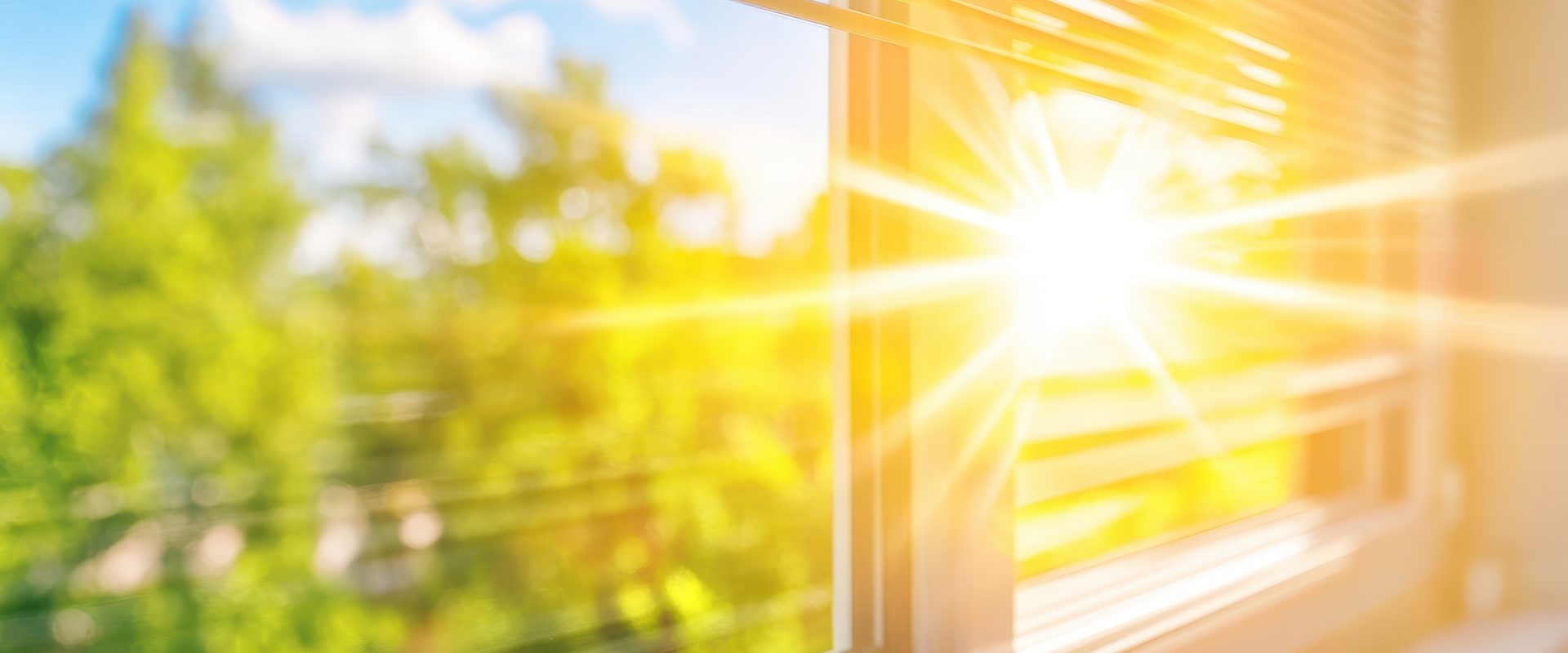When summer temperatures rise, keeping indoor spaces cool can be challenging, especially in homes or buildings with large or multiple windows.
While several fans and keeping curtains closed are common solutions for keeping homes cool in summer, one of the most effective ways to control indoor heat is to make the right choice when it comes to your windows. In fact, the type of glass you choose has a huge impact on how much heat enters your home, how comfortable it is inside, and how much energy you use to keep rooms cool.
Here, we discuss how glass choice affects indoor comfort in summer and highlight how solar control glass, low-E coatings, and triple glazing can help to keep your home cool.
How does glass impact summer heat?
Glass can either help or hinder your efforts to keep your home cool in summer. Standard glass allows a significant amount of heat energy to pass through it which can lead to overheating, an uncomfortable glare, and increased use of fans or air conditioning, especially in rooms that get the most sunlight.
By choosing the right type of glass, you can reduce heat, improve thermal comfort, and lower your cooling bills.
Solar control glass
Solar control glass reduces the amount of heat that enters a building from the sun. It features a special coating that reflects or absorbs an impressive amount of solar radiation while still allowing plenty of natural light to travel through. Solar control glass is ideal for conservatories, sunrooms, office buildings, or any room that gets lots of direct sunlight.
There are different levels of solar control and the right option for you depends on your needs. In hotter climates or buildings with lots of windows, you might choose high-performance solar control glass that blocks up to 80% of solar heat, while moderate control coatings seamlessly enable heat reduction without negatively impacting natural warmth and daylight.
Benefits of solar control glass
- Reduces overheating in summer
- Minimises glare
- Lowers cooling costs
- Improves indoor comfort without darkening the space
Low-E coatings
Low-emissivity (low-E) coatings are typically popular due to their winter performance as they efficiently keep heat inside during the colder months. However, modern low-E glass also works during the summer by limiting how much infrared and UV radiation passes through the window.
On warmer days, low-E glass reflects heat energy away from the interior, helping to maintain a cooler environment. The coating cannot be seen, so it doesn’t affect the appearance of the glass or reduce natural light.
Benefits of low-E glass
- Reflects external heat
- Helps maintain stable indoor temperatures
- Doesn’t reduce natural light
Triple glazing
While triple glazing is also often associated with energy efficiency during winter, it also offers advantages in summer. The three layers of glass act as barriers that slow down heat transfer in both directions. In warmer months, triple glazing helps prevent external heat from entering the home, especially when paired with solar control or low-E coatings.
Triple glazing benefits
- Reduces heat from the sun
- Enhances thermal comfort
- Improves energy efficiency for air-conditioned rooms
- Provides sound insulation
Summer glass installation tips
Choosing the right glass isn’t just about keeping your home warm in winter, it’s a year-round decision that affects comfort, energy use, and noise pollution. For optimal summer performance:
- Use solar control glass to block excess heat
- Choose low-E coatings that reflect infrared and UV rays
- Consider triple glazing for maximum insulation and comfort
By investing in the right glass solutions, you can enjoy a cooler, more comfortable home all summer. Contact Salisbury Glass today to find out more and discuss your options.



